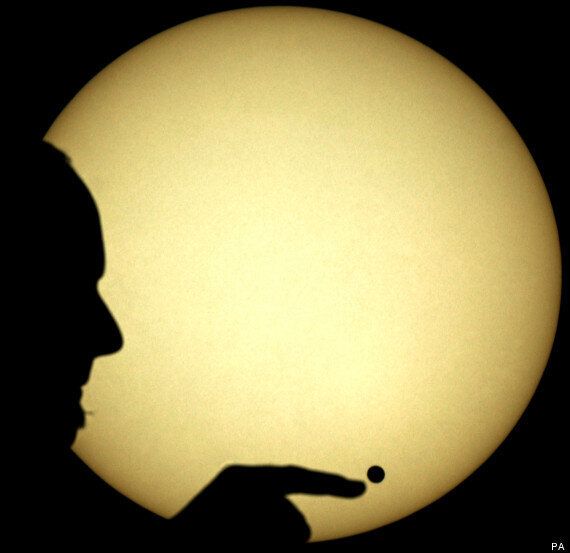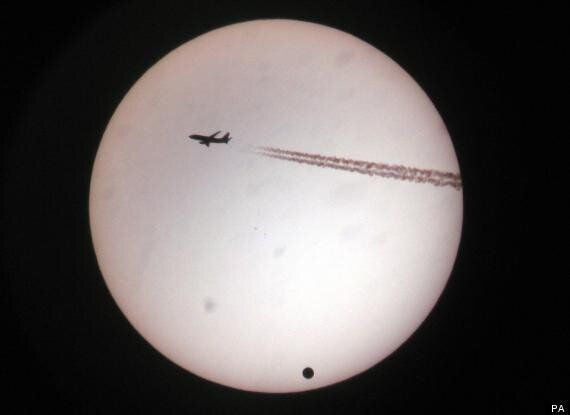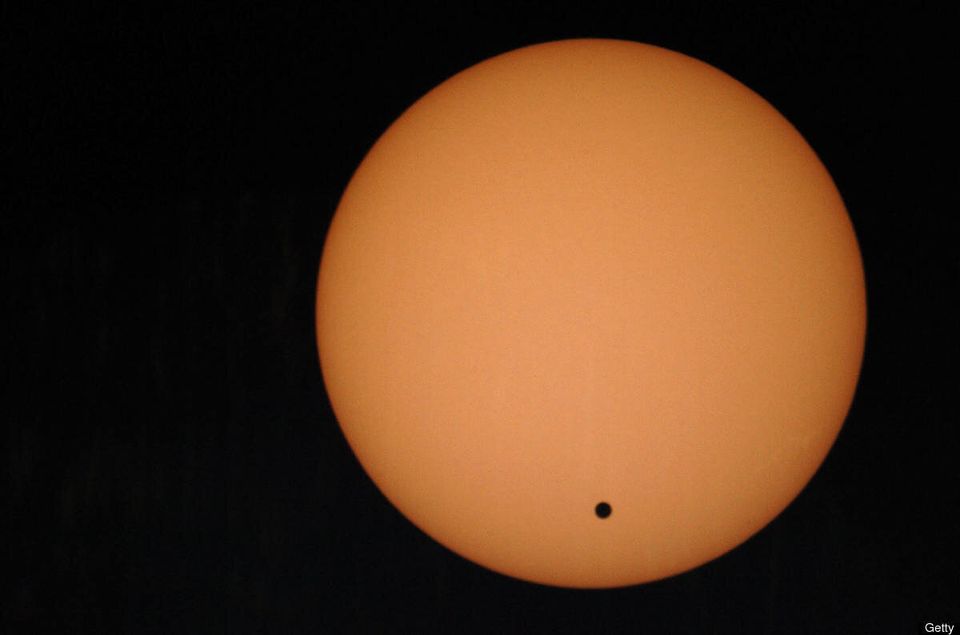On the 5th and 6th of June an astronomical event known as a 'Venus transit' will occur as the planet crosses the face of the Sun.
Venus transits come in pairs separated by eight years, with more than a century between one pair and the next.
As well as events that are anticipated by amateur and profesional astronomers alike, they are also of huge historical significance.

A man silhouetted against a projection of a Venus transit
Venus transits in previous centuries allowed scientists to tackle a fundamental astronomical problem: accurately measuring the distance between the earth and the sun.
How this was done set the scene for adventures worthy of a Hollywood film script.
The first attempt was made by Lancastrian amateur astronomer Jeremiah Horrocks in 1639. Applying triangulation techniques to transit observations, he obtained a crude estimate of the earth-sun distance, known as the astronomical unit (AU). But he was still out by millions of miles.

An airplane passes the sun during the transit of planet Venus
Speaking on the BBC Today programme, Andrea Wulf, the author of Chasing Venus: The Race to Measure the Heavens, explained the monumental challenges that astronomers faced at the time.
"This is a time when clocks are still not precise enough to determine longitude," she says. "A time when a letter from Philadelphia to London takes two or three months to arrive," she said.
"It was clear right from the beginning that it would have to be an international scientific collaboration. Countries which were at war would have to work together. Just the logistics of it must have been absolutely extraordinary."
A more serious approach to the task was planned for the next pair of transits in 1761 and 1769. Expeditions were dispatched across the globe to observe the phenomenon from different points on the earth. By noting the different times at which the transits started and stopped, the AU could be calculated.

Christine Keogh, 13, from Dublin, helps her sister Kate look through a telescope to see the planet Venus passing across the sun's face
One expedition to Tahiti was famously led by Captain James Cook and astronomer Charles Green on their ship HMS Endeavour. Fearing attack by the less-than-friendly natives on the island, they built a stockade fortress, defended with guns, to protect their crew and equipment. The place where they carried out the successful mission is still known as Point Venus.
French astronomer Guillaume Le Gentil was less lucky on his two expeditions. The first had to be abandoned in 1761 after Le Gentil found himself still at sea, unable to make useful observations because of the rolling of his ship.
For the next transit in 1769 Le Gentil built a small observatory in Pondicherry, a French colony in India, only to find the sun completely obscured by clouds. On his journey home, he contracted dysentery and was caught in a storm.
Le Gentil took so long to return to Paris that he was declared legally dead. He then discovered that his wife had remarried and his relatives had plundered his estate.
Observations from the 18th century transits showed the earth to be 153 million kilometres from the sun. The correct figure of 149.59 million kilometres was finally obtained by further expeditions around the world to observe the transits of 1874 and 1882.

An astronomer at the Royal Observatory in Greenwich, SE London, observes as the planet Venus transits across the Sun
The era of transits had a profound effect on science as Wulf explains: "The whole idea of a modern scientific expedition is formed in this time.
"From now on if you go to another place on the globe, its accepted that you have to take a scientific team with you. So we get Charles Darwin on the Beagle, and even Napoleon, when he invades Egypt, takes two hundred scholars with him. It all stems from this single endeavour to measure the size of the solar system."
Today the AU is fixed at 149,597,870.691km.
